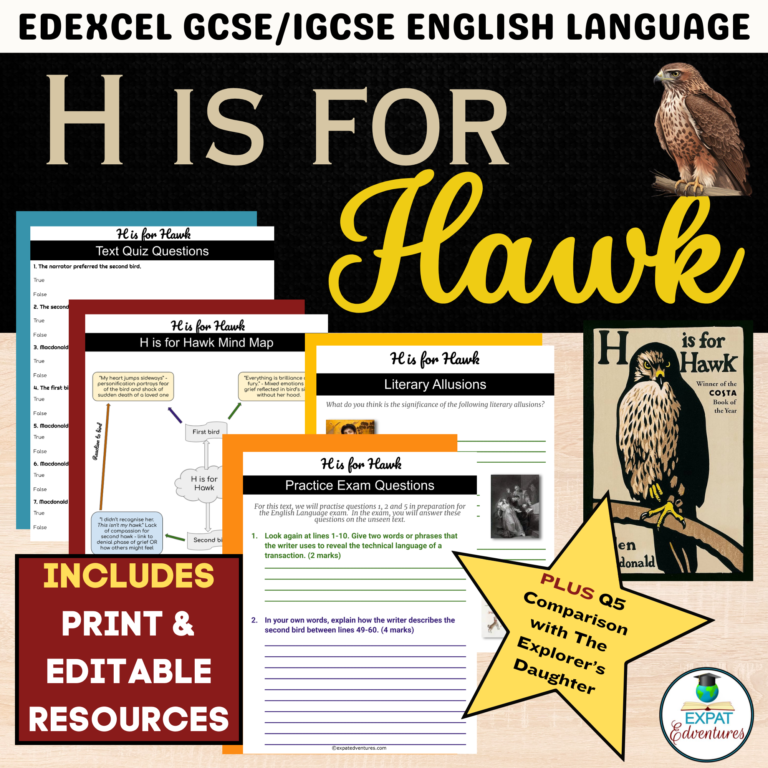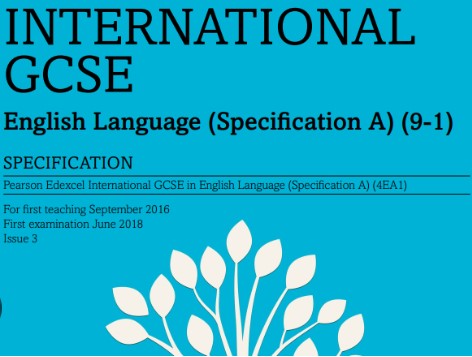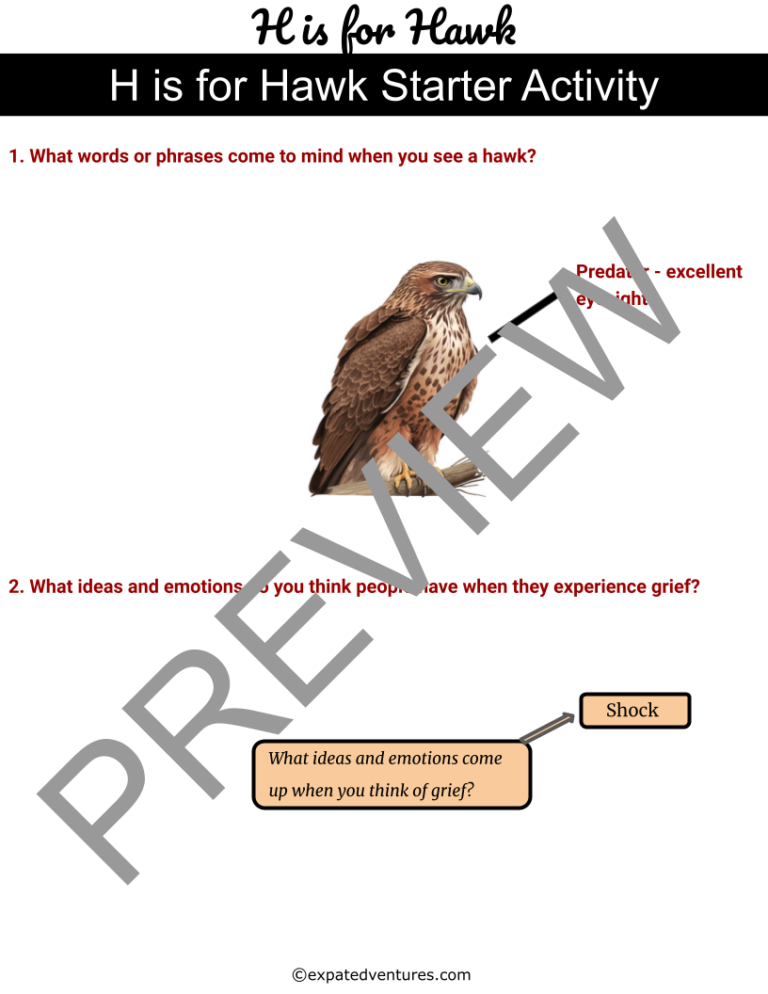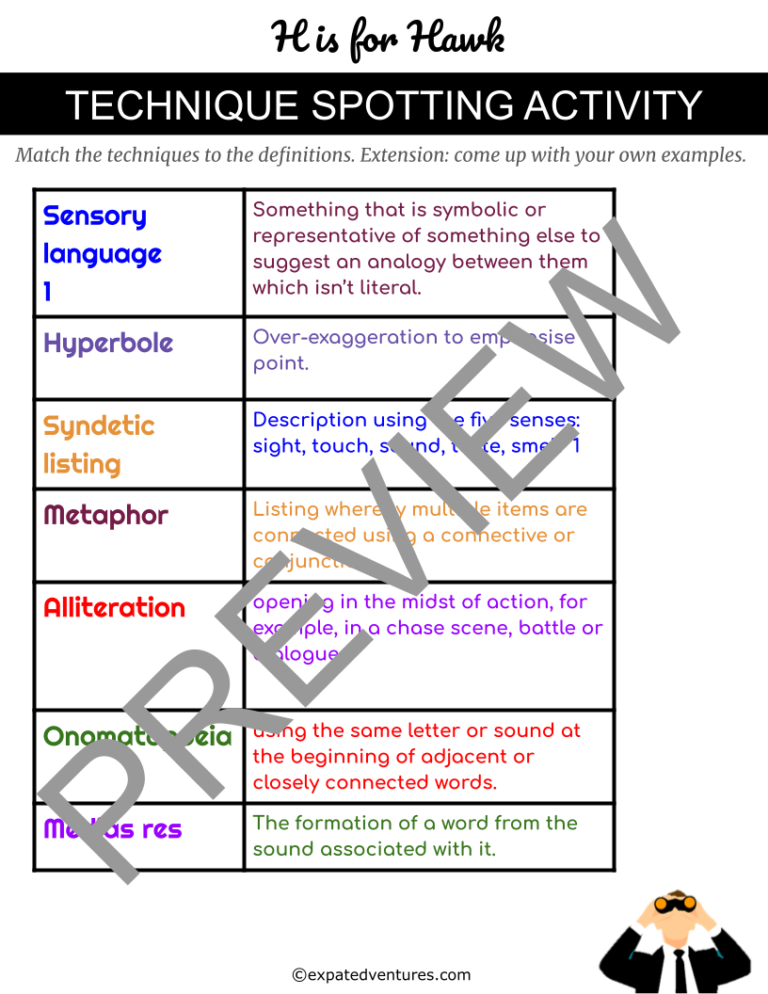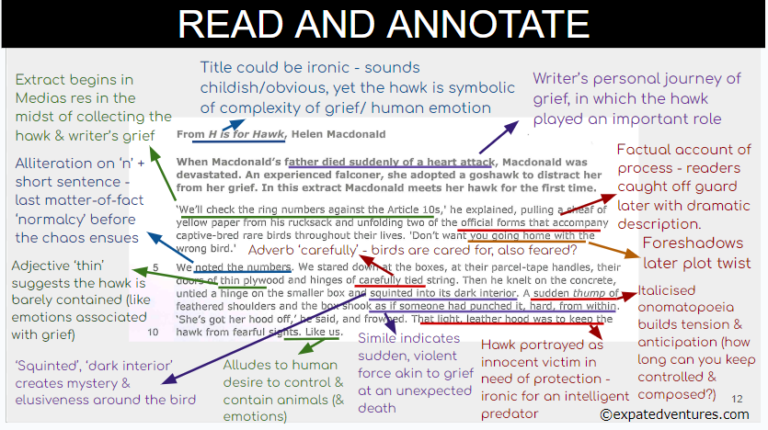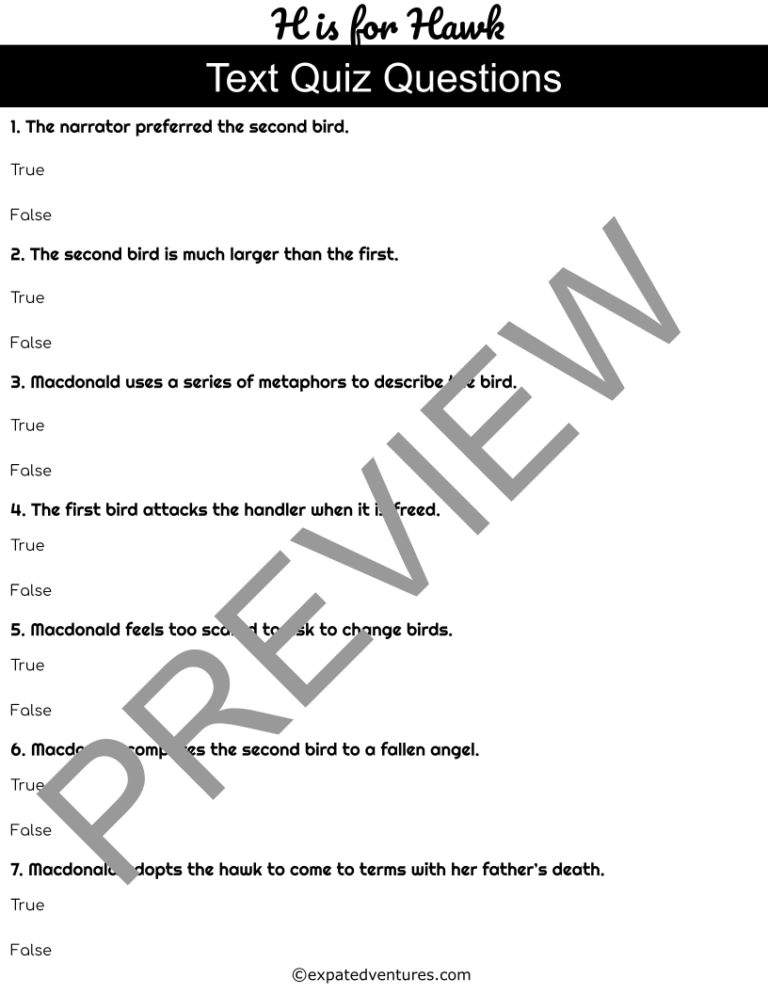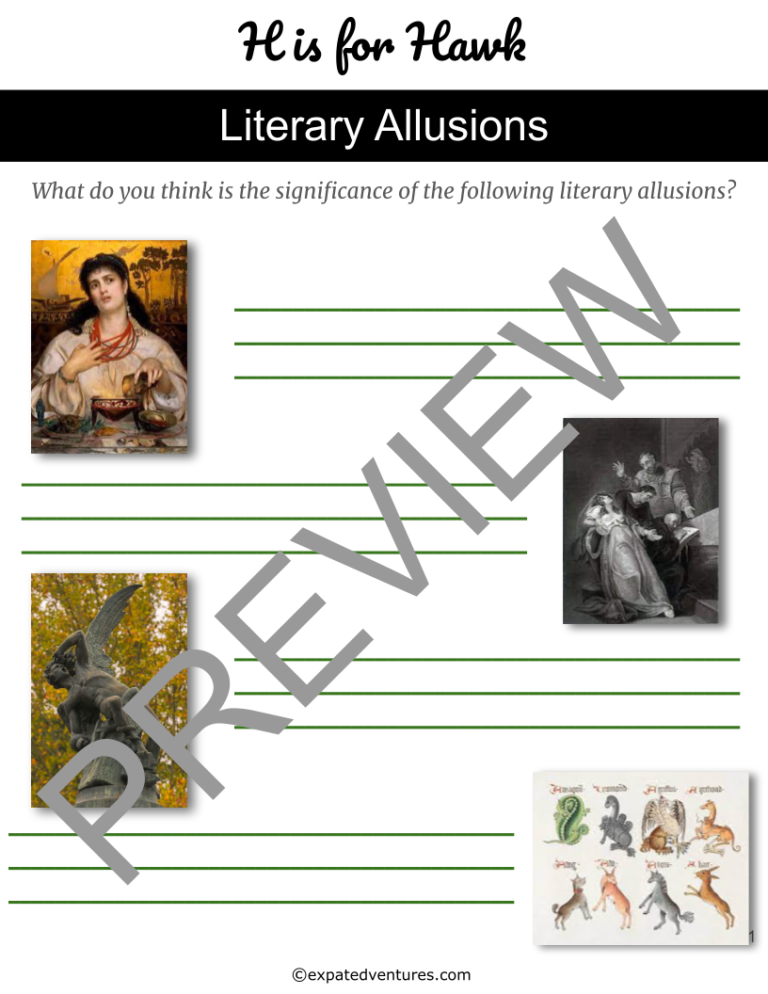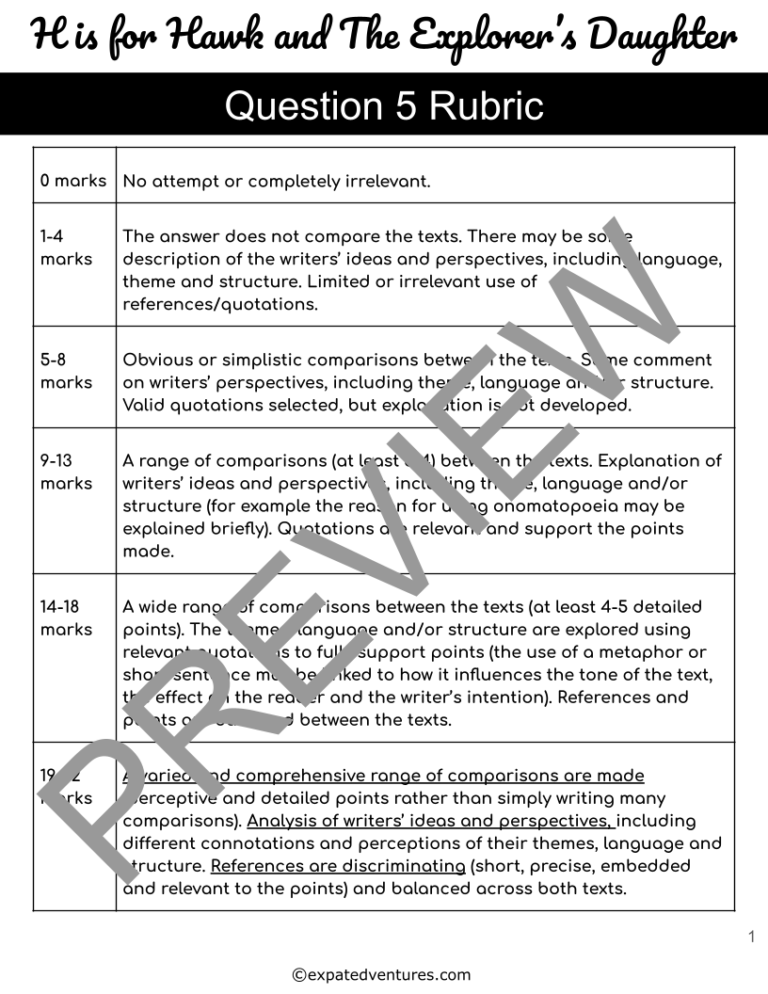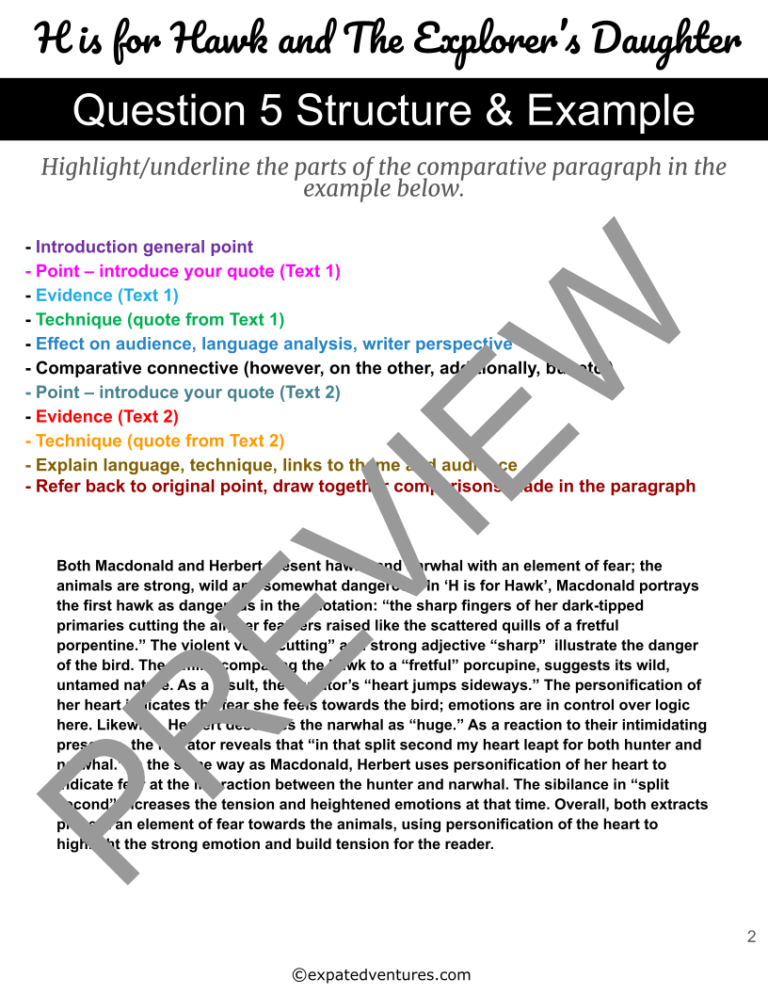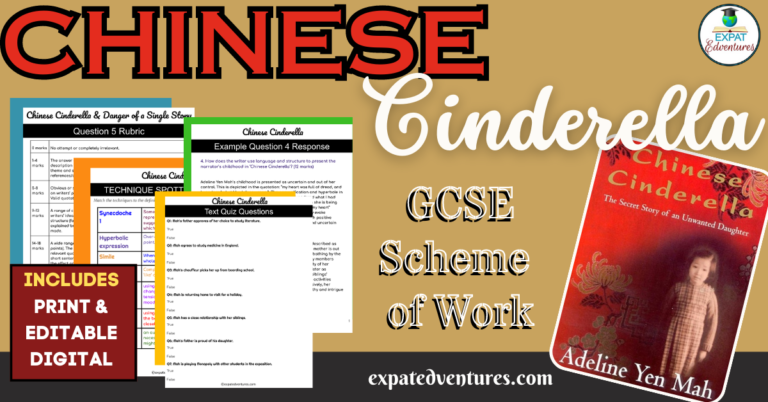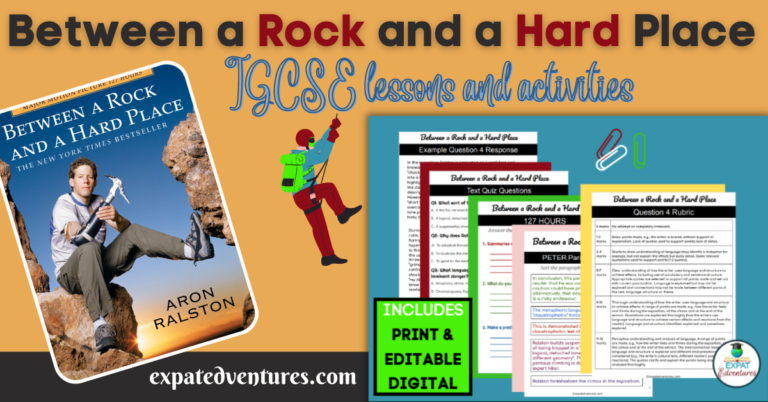H is for Hawk is currently taught on the Edexcel GCSE/IGCSE English Language Paper 1 curriculum. It is one of the 10 non-fiction texts which students answer on in Section A. This guide to teaching the extract includes activity ideas and teaching tips. The H is for Hawk IGCSE resources pack contains editable Google Slides, detailed annotations, practice exam questions with a mark scheme and quiz questions with an answer key. All resources are available as downloadable PDFs and as editable Google documents so that you can alter them to suit your students.
The central theme is the writer’s exploration of grief following the unexpected passing of her father. Helen Macdonald’s descriptions of the hawks contain symbolic references to the rollercoaster of emotions experienced during the grief process. Depending on where you are teaching this text, you may not have to work very hard to engage your students! I taught it in the UAE, and many students had experience owning and handling falcons. Therefore, this extract was very relatable for them.
Macdonald includes multiple metaphors and allusions in the text to explore the concept of grief; but how can we support students to capture that in their exam essays? How can we break it down to consider not only the message from a critical stance, but how Macdonald conveys the complex journey of grief through multiple language and structural techniques?
H is for Hawk IGCSE Resources
As a GCSE examiner of more than a decade, I aim to create resources to help students improve their exam scores. So, I’ve created a scheme of work for busy teachers to take you step-by-step through the text from the angle of exam performance. It contains everything from an engaging, thought-provoking starter, to language techniques, to analysing and annotating the text, to practising Edexcel GCSE style questions on the text, including a comparison to another GCSE text, The Explorer’s Daughter.
This resource contains editable Google slides, quizzes with answer keys, comprehension questions, exam questions, techniques, a model paragraph and close textual annotations of the whole GCSE extract. Furthermore, all activities are ready to download and print in PDF form or there are links for you to personalise them if you wish.
Edexcel IGCSE English Language Exam Paper 1
The 2 hour 15 minutes Edexcel IGCSE English Language Paper 1 exam is split into Section A and Section B. Section A is the reading assessment and candidates are presented with one of the 10 non-fiction Anthology texts and one thematically linked unseen text. The texts are between 1.5 and 2.5 pages long. They have 5 questions to answer in Section A:
- A 2 -mark retrieval question. The skill being assessed in this question is lifting and copying two brief and relevant quotes from the unseen text.
- A 4-mark summary question. Candidates are asked to paraphrase a certain event, character or theme from the unseen text.
- A 5-mark ‘SQUID’ question (it’s an acronym not a slimy sea creature!). Students identify five distinct details from the unseen text and use quotations to support their points.
- A 12-mark extended analytical response on the seen text.
- A 22-mark comparative essay, usually based on the writers’ perspectives, experiences or feelings.
Section B is a writing assessment. Candidates choose between two options, which are normally loosely based on the Section A texts. The text types include a letter, article, speech or leaflet. Both Section A and Section B are equally weighted, worth 45 marks each.
H is for Hawk IGCSE Starter Resource
To start teaching this extract, I gauge students’ opinions about the central ideas and themes. I share images of hawks and elicit words and ideas. In response, students usually come up with words such as predator, hunter, powerful, beautiful, awesome, fast etc. This gives them a good base of ideas to approach the text with.
Next, I ask them about typical reactions and emotions people experience when they’re grieving. You may wish to give a warning to students before teaching this text that grief is the central theme and although it is explored symbolically, it will be a focal point of many class discussions on the text. After discussing in pairs for a few minutes, students normally describe a range of emotions such as denial, sadness, despair, guilt, anger, acceptance etc.
In summary, these two activities enable students to gather their preconceived thoughts on the themes and ideas in the text, giving them a framework to approach and understand the extract. The H is for Hawk IGCSE resources pack includes these activities as a handout and on the Google slides.
H is for Hawk Language and Structure Techniques
Before diving into the text, I quickly review key language techniques in the extract so that they are fresh in students’ minds as they read. This H is for Hawk IGCSE resources pack includes a matching activity as a PDF worksheet and on the Google slides. Students match the definition and technique, which they can either copy, cut and paste or simply number. As an extension, students can write their own examples of the techniques. This is also a useful revision tool for H is for Hawk and any of the other texts examined at GCSE.
H is for Hawk IGCSE Text Annotations
Prior to close textual analysis, I often ask students to do an initial reading with 2 different coloured highlighters. They highlight language which describes the hawks in one colour and the narrator’s interactions with the hawk handler with another. It is a fairly straightforward extract for students to understand on a surface level. A grieving woman meets the hawk she is planning on adopting and changes her mind about which one she wishes to take. The more challenging skill comes in unpacking how and why Helen Macdonald uses her experience to explore the complex journey of grief.
When it comes to closely analysing the text of the extract, there are a few ways of approaching the activity. You can read and annotate together with students completing the annotations in real time. Alternatively, you can split students into groups and ask each group to focus on a certain paragraph before feeding back to the class. Or you could read and discuss, then ask students to complete the annotations for homework.
There are many ways of approaching close textual analysis. I find that varying the method for different texts keeps students interested through the unit. This H is for Hawk IGCSE resources pack contains detailed line-by-line annotations for you to share with students.
H is for Hawk Quiz Questions and Answer Key
After analysing the text, I do a quick AFL quiz with students to assess their understanding of the language and structure of the text. Then, I introduce exam practice questions. Quiz questions for a straightforward low stakes true and false quiz with answers are available on the slides and in PDF form with this H is for Hawk IGCSE resource. This can be done as a whole class activity on the interactive whiteboard or handed out to students to do in pairs or individually, depending on your time and the nature of your class.
Edexcel H is for Hawk IGCSE Analysis
Part of the analysis of this text involves linking allusions to the writer’s message. This is not an easy skill for many students. Therefore, I have included a visual worksheet, which isolates some of the allusions Macdonald utilises, such as a biblical reference and allusion to a Medieval concept. On the Google Slides, you will find an explanation in the notes and what the allusions are. The worksheet has the images and space for students to write their notes and ideas. As long as the students are aware of what the allusions are and have some idea about how they relate to the message, this is sufficient for GCSE level.
Edexcel H is for Hawk IGCSE Past Paper Questions
Questions 1, 2 and 3 on the Edexcel IGCSE English Language Paper 1 exam test students’ understanding of the unseen text, whereas question 4 assesses analysis and evaluation of the previously studied text. When you teach the 10 non-fiction texts, it’s useful to focus on one or two of the questions per text. That way, you can teach the structure and rubric for each of the questions and help students to plan and write quality responses. You have time for self and peer assessment as well as model answers. Over the span of studying all 10 texts, students will cover all question types from the language exam.
In this H is for Hawk IGCSE resources pack, there is a prompt in the style of the 2-mark question and the 4-mark question 2 from the Language Exam Paper 1 Section A. For the 2-mark question 1 example, explain how students gain full marks, ask them to answer the question available on the slides, then self or peer assess straight away. That way, they get immediate feedback and can achieve a low stakes question before moving on to the more challenging 22-mark question 5.
Also, there is a practice question 2 in the resource pack. Question 2 involves students summarising part of the unseen text in their own words. However, in order to get to know H is for Hawk well and get used to exam-style questions, they can answer on the studied text. There is a mark scheme and I find that students can self-or-peer assess this question without problems. Ensure students use their own words and write 4 clear and distinct points to gain full marks for this question.
H is for Hawk IGCSE Mark Scheme
For this text, I also introduce students to Question 5 on the English Language Paper 1 – the 22-mark comparative essay. In the exam, students compare the studied set text to an unseen text, which is usually thematically linked to the text studied in class. If you are teaching all 10 texts and have a limited time, you can ask students to compare to one of the set texts before you study it in detail. I find that The Explorer’s Daughter compares well with H is for Hawk. Although their subjects are very different, they both have animals as a focal point and explore a range of emotions.
I first give students the question of focus. Before asking them to answer it, I go through the rubric. You could ask students to highlight key words or identify skills required to achieve top marks for this question. Then, ask students to complete a comparison table after simply reading the ‘The Explorer’s Daughter’ text (not studying it in detail yet to mimic the exam). They make notes identifying similarities and differences between the texts. It’s useful for students to do a brief condensed version of this process in the exam. I have included an editable template with key comparisons in the scheme of work as well as a completed teacher version.
H is for Hawk IGCSE Model Essay
Once they have done the notes in pairs or independently, take feedback. Students could complete this digitally then combine notes on a shared document or platform if your situation enables digital interaction between students (sharing a document on Teams for example). Now, students have generated ideas and selected relevant quotes to write in their comparative essay, I share an example of how to construct an effective comparative paragraph. As an examiner, I see many superficial and unorganised comparisons, which reduce students’ marks. Teaching a paragraph formula can help students quickly and effectively construct cohesive essays.
A big part of comparative writing is connecting ideas. I have included a quick connective activity to compile a variety of comparison and contrast connectives. This way, students have a range of ‘signposts’ for their ideas available to them in their ‘exam toolkits’. When that quick activity is done (answers included in the resource pack), students can actually write their answers. Giving them a framework and collective idea generation enables them to write higher quality answers straight away.
Edexcel GCSE English Language Transactional Writing Practice
There are also a couple of creative activities included in this resource. Time-permitting, you could use it as a class activity if you feel that students aren’t connecting with the text, as a homework assignment or an extension activity to challenge students to broaden their perceptions of the text. This can help develop skills required for Section B of Paper 1 (Transactional Writing) and Section B of Paper 2 (Imaginative Writing).
H is for Hawk IGCSE Lesson Activities, Resources and Revision
To sum up, some of the best techniques for teaching the 10 non-fiction texts and creating great revision resources for students include:
- Hook students with an intriguing starter activity
- Use alternative methods to closely analyse and annotate the text
- Quiz students for quick AFL to assess whether they are engaging with the text
- Practise either questions 1-3, question 4 or question 5 from the Language paper
- Study model answers, including examples of typical mistakes students make in the exam responses
- Offer an optional creative activity as homework or an extension to challenge students’ perceptions of the text
Good luck teaching H is for Hawk – it’s evocative and powerful so interesting to teach in so many ways. Comment below if you can add any useful teaching and learning techniques for this text.
If you enjoyed this article about teaching ‘H is for Hawk’, you might also find value in my Edexcel IGCSE Paper 2 guides and resources for ‘Out, out-‘ and ‘Disabled’. There are also Edexcel IGCSE English Language Paper 1 guides and schemes of work for many of the set texts, including The Danger of a Single Story and A Passage to Africa. Follow my store for more as resources are constantly being added.


